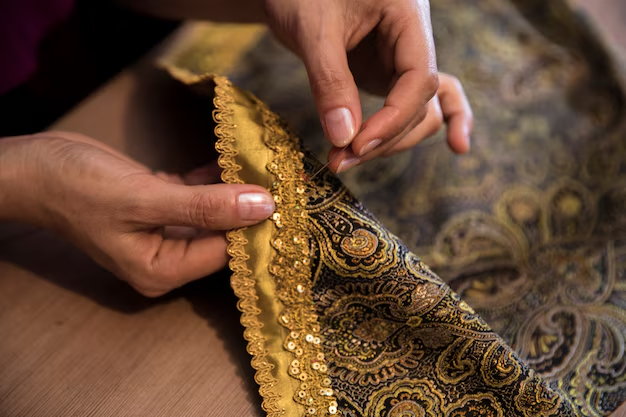
Culture is the backbone of human society. It encompasses the shared beliefs, values, customs, traditions, art, language, and practices that define a group of people. Over time, these cultural elements evolve, influencing everything from personal identity to global interactions. By understanding culture and its deep roots, we gain insight into the complexities of human existence and how different societies have shaped and been shaped by their environment.
This article takes you on a journey through time, exploring the rich tapestry of culture that has defined human history and continues to shape our world today.
The Birth of Culture: From Early Civilizations to Ancient Traditions
Culture has existed since the dawn of humanity. Early humans, while focused on survival, began developing language, art, and social structures. These early cultural practices laid the foundation for the civilizations that would follow.
1. The Dawn of Art and Language
The birth of language and the creation of art are two of humanity’s earliest cultural achievements. Cave paintings found in places like Lascaux, France, date back over 17,000 years and provide insight into the spiritual and social lives of early humans. Language, too, allowed individuals to communicate, collaborate, and pass down traditions. These early forms of culture helped establish community, enabling early societies to grow and thrive.
2. Ancient Civilizations: Mesopotamia, Egypt, and Beyond
As human societies grew more complex, so did their cultural practices. The great ancient civilizations of Mesopotamia, Egypt, the Indus Valley, and China each developed unique cultural identities that left lasting legacies. In Mesopotamia, the Sumerians invented the first known writing system, cuneiform, which enabled them to record their laws, trade, and history. In Egypt, monumental architectural feats like the Pyramids of Giza and the development of religious practices like mummification became deeply intertwined with their cultural identity. These early civilizations set the stage for the evolution of culture across continents.
The Evolution of Culture: From Classical to Modern Times
As time progressed, cultures evolved, merging traditions from various parts of the world and adapting to changing environments. The exchange of ideas through trade, migration, and conquest enriched the cultural landscape, creating new forms of art, philosophy, and governance.
1. The Influence of Classical Civilizations
Classical civilizations like Ancient Greece and Rome had a profound impact on Western culture. Greece is often considered the birthplace of democracy, philosophy, and theater, with figures such as Socrates, Plato, and Aristotle influencing the way we think about ethics, politics, and knowledge. Roman culture built upon Greek foundations, contributing advances in law, engineering, and governance. The Roman Empire’s expansion also facilitated the exchange of culture across Europe, the Middle East, and North Africa.
2. The Middle Ages: A Time of Transformation
The Middle Ages, or Medieval period, was marked by feudalism, the spread of Christianity in Europe, and the rise of Islamic empires in the East. While this era is often associated with cultural stagnation in Europe, it was a time of significant cultural development in other parts of the world. In the Islamic world, advancements in mathematics, astronomy, and medicine flourished, with scholars preserving and expanding upon the knowledge of the ancient Greeks and Romans. The Renaissance, which began in Italy in the 14th century, later brought a revival of classical ideas, art, and literature to Europe, setting the stage for the modern era.
Globalization and the Fusion of Cultures
With the onset of globalization, cultures around the world began interacting on a scale never seen before. The exchange of goods, ideas, and technologies through trade, exploration, and migration has led to the blending of cultural practices, creating both tensions and opportunities for cross-cultural understanding.
1. The Impact of Colonialism
Colonialism played a significant role in the global dissemination of cultures, though often at a great cost to indigenous populations. As European powers colonized vast regions in Africa, Asia, and the Americas, they imposed their cultural practices on local populations, leading to the suppression of indigenous cultures and the introduction of new religions, languages, and social systems. While colonialism left a deep and painful legacy, it also facilitated the exchange of ideas, technologies, and cultural practices, resulting in a more interconnected world.
2. Cultural Fusion in the Modern Age
In the modern era, cultures have increasingly fused through migration, travel, and digital technology. People from diverse backgrounds now live and work together, bringing their customs, traditions, and languages to new places. This fusion of cultures is visible in everyday life: from food, music, and fashion to art, film, and literature. For example, the popularity of sushi and yoga in Western countries, or the global influence of Hollywood and Bollywood, demonstrates how cultural exchange has enriched societies across the world.
The Role of Technology in Shaping Culture
As we move further into the 21st century, technology has become a major force in shaping culture. The internet, social media, and digital technology have transformed the way we communicate, consume information, and interact with one another. These advancements have facilitated the rapid spread of cultural ideas, trends, and movements, making the world feel more interconnected than ever before.
1. Social Media and the Global Village
Social media platforms like Facebook, Instagram, and Twitter have revolutionized the way people share their cultures and experiences. What was once confined to local or national borders is now available to a global audience. Artists, activists, and influencers can spread their messages to millions, making culture a dynamic, evolving exchange rather than a static, isolated concept.
2. Digital Art, Music, and Entertainment
Technology has also transformed cultural expression. Digital platforms like YouTube, Spotify, and Netflix allow artists and creators to share their work with a global audience. The rise of video games, virtual reality, and interactive media offers new ways for people to engage with culture, enabling them to experience and create art, music, and storytelling in innovative ways.
Preserving Culture in a Changing World
While globalization and technological advancements have brought about a fusion of cultures, they have also raised concerns about cultural preservation. In a world where cultural exchange happens at lightning speed, it is important to ensure that traditional practices, languages, and customs are not lost. Many communities and organizations are working to preserve their cultural heritage through education, documentation, and revitalization efforts.
1. Language Preservation
Language is one of the most vital aspects of culture. Unfortunately, many languages are disappearing at an alarming rate. Efforts to document and revitalize endangered languages are critical to preserving the cultural knowledge and traditions that come with them. Initiatives like language immersion schools and digital archives are helping to keep these languages alive for future generations.
2. Cultural Heritage Sites
UNESCO World Heritage sites play an essential role in preserving cultural landmarks that hold historical and cultural significance. These sites, which include landmarks like the Great Wall of China, the Pyramids of Egypt, and the historic center of Rome, provide a connection to the past, helping future generations understand and appreciate the cultures that came before them.
Conclusion
Culture is a dynamic, living tapestry that weaves together the threads of human history, identity, and expression. From ancient civilizations to modern digital platforms, the journey through time reveals the power and importance of cultural traditions, customs, and innovations. Understanding and celebrating culture not only helps us appreciate the rich diversity of the human experience but also fosters a sense of connection in an increasingly globalized world. By preserving and sharing our cultural heritage, we ensure that future generations can continue to explore the vibrant and ever-evolving tapestry of human culture.



